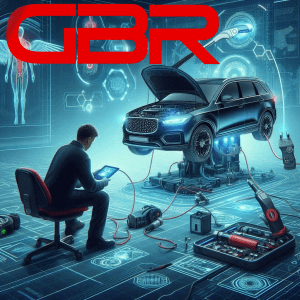Diagnostics: Beyond the scanner
Modern cars are more than just mechanical marvels; they’re intricate computer systems on wheels. The OBD2 (On-Board Diagnostics) system, introduced in vehicles from 1996 onward, plays a crucial role in monitoring and maintaining a car’s health. While code readers provide basic insights, true car diagnostics go beyond merely plugging in a code reader.
Diagnostics: Beyond the scanner

Car Diagnostics Beyond Code Readers
Modern cars are more than just mechanical marvels; they’re intricate computer systems on wheels. The OBD2 (On-Board Diagnostics) system, introduced in vehicles from 1996 onward, plays a crucial role in monitoring and maintaining a car’s health. While code readers provide basic insights, true car diagnostics go beyond merely plugging in a code reader.
Car diagnostics involve unravelling the mysteries of sensors, wires, and computer systems. While modern vehicles come equipped with an array of sensors—temperature sensors, crank position sensors, and more—some share wiring, complicating the diagnostic process. Technicians will use an array of equipment, from the diagnostic scanner, to the Oscilloscope, and the humble Multimeter to measure and datalog many variables such as shared circuits: Imagine a scenario where two sensors—let’s say a temperature sensor and a crank position sensor—share the same wiring harness. When diagnosing issues, it’s crucial to differentiate between these sensors. A fault in one could affect the other, leading to misleading diagnostic results.
It is therefore important to go beyond the OBD scanner, using the following skills, amongst others, to build a complete picture of the fault, or faults:
Visual Inspection: Inspecting the wiring harness visually is essential. Look for physical damage, corrosion, or loose connections. Shared wiring complicates this process, as a fault in one sensor’s circuit might affect others.
Understanding circuits: By studying wiring diagrams and grasping how circuits work, technicians can pinpoint faults. Is it the sensor itself, the wiring, or the primary ECU?
Automotive Oscilloscopes:
- Diagnosing Faults with Precision:
- An oscilloscope displays signal voltages on a graph, allowing technicians to measure and analyze specific systems.
- By connecting it to sensors or components, they can visualize waveforms—revealing voltage changes over time.
- Whether it’s a misfiring spark plug, erratic sensor output, or a glitchy alternator, the oscilloscope can pinpoint issues with precision.
- Recognizing Mechanical Issues:
- Beyond electronic glitches, oscilloscopes help identify mechanical problems.
- Slipped timing belts, irregular compression, and other internal engine issues leave their traces in voltage waveforms.
- Technicians use oscilloscopes to scrutinize these patterns, ensuring accurate diagnoses.
- Testing Components Before Replacements:
- Before swapping out parts, it’s crucial to verify their functionality.
- Automotive oscilloscopes allow real-time monitoring of alternators, starters, and other critical components.
- By analyzing waveforms, technicians can decide whether a replacement is necessary or if the issue lies elsewhere.
- Adapting to Evolving Vehicle Complexity:
- As cars become more sophisticated, older measuring tools fall short.
- Oscilloscopes handle the intricacies of hybrid and electric vehicles, where sensor signals and noise patterns demand advanced diagnostics.
- They’re the eyes that see beyond the surface, revealing the hidden heartbeat of your car’s systems.
Our Location
Find Us
31 Sturmi Way
Village Farm Industrial Estate
Pyle, Bridgend
Mid Glamorgan
CF33 6BZ
01656 670741
Opening Times
| Monday | 09:00 - 17:30 |
|---|---|
| Tuesday | 09:00 - 17:30 |
| Wednesday | 09:00 - 17:30 |
| Thursday | 09:00 - 17:30 |
| Friday | 09:00 - 17:30 |
| Saturday | Closed |
| Sunday | Closed |



Car Repairs & Services
- Airbag Repairs
- Auto Electrics
- Brake Disc Skimming
- Cambelts
- Campervan Repairs & Servicing
- Car Air Conditioning
- Car Batteries
- Car Brakes
- Car Exhausts
- Car Modifications
- Car Repairs
- Car Servicing
- Clutch Replacement
- Diesel Particulate Filter Cleaning
- Diesel Performance ECU Tuning
- Dyno Services
- ECU Remapping
- Electric Car Repairs & Servicing
- Engine Diagnostics
- Engine Rebuilds
- Engine Remapping
- Engine Tuning
- Hybrid Car Repairs & Servicing
- Milltek Car Exhausts
- RacingLine
- Steering
- Suspension
- Wheel Alignment
- All Car Repairs & Services…





